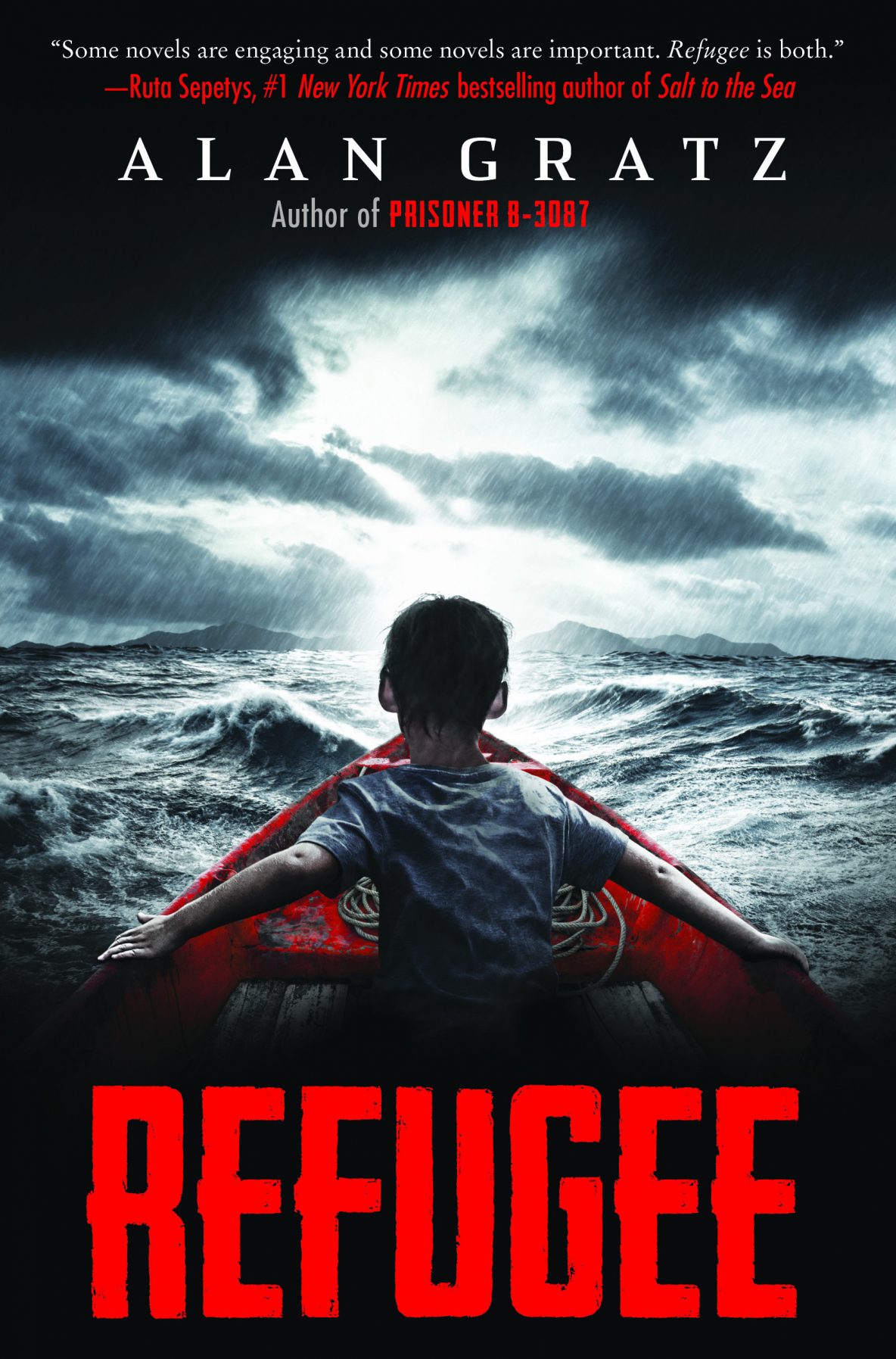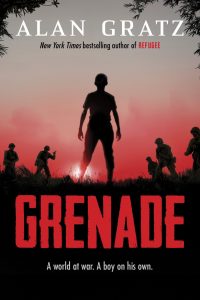Was Refugee always set up as three person narrative? Were their stories always connected?
Refugee began for me with the story of the MS St. Louis. For those who haven’t read Refugee yet, the St. Louis was a passenger ship that left Nazi Germany in 1939 with more than 900 Jewish refugees on board, bound for Cuba. The St. Louis didn’t end up in Cuba though. The story is a famous one now, and there have been books and plays and films of the story. But there wasn’t a book for young readers. For middle schoolers. I wanted to write that book. Then, while I was still thinking about who my main character would be and what his or her story would be on board the ship, my family and I went on vacation to Florida. One morning we got up to go for a walk on the beach, and there we found a raft that refugees had taken to come to the United States. No one was on board it when we found it, so I don’t know exactly where it came from. My best guess was that it came from Cuba, which is just 90 miles away from Florida. Seeing that raft made me and my family really think–about the things we took for granted, about the freedoms we enjoy as American citizens. And in a way, it felt like the universe was trying to tell me something. It was saying, “You may be writing about refugees seventy-five years ago, but don’t forget there are refugees here and now.” And of course, at the same time, I was seeing on the news images of the Syrian civil war and the ensuing refugee crisis. First I wanted to write a book about Jewish refugees in 1939, then I wanted to write a book about Cuban refugees in the 1990s, and now I wanted to write a book about Syrian refugees in the present day. Which book was I going to write first? They were all such important stories! And then I realized–why do I have to write three books? What if I wrote one book that combined all three stories. That’s how Refugee was born. But it wasn’t until I had thought about my three main characters and realized I could connect them all across the miles and decades that separated them that I really had a novel. Their stories were connected in my mind before I ever wrote the very first word of the book.
Oh, that’s tough. I love Ancient Rome. I would also like to maybe write something about the Revolutionary War. But I’m going to stick with World War II for a while. Kids are eating it up!
What reaction came as the biggest surprise after the book was released?
The reaction of young readers has been amazing. I’ve already gotten lots of fan letters from young readers in the short time the book has been out. But the best of them has to be a letter from a mom who said that her son read the book and was so moved by it that he asked for donations to be made to UNICEF in lieu of Christmas gifts last year. Except for Nerf darts and a new skate board ramp. 🙂 His mom told me later that his request turned into more than $1,000 donated to UNICEF by friends and family in his name. Stories like that make me so glad this book is out there in the world right now, and so grateful for young readers.
You’ve had success at many different levels, what makes Middle Grade readers unique as an audience you enjoy writing for?
Middle grade readers are some of the most demanding readers on the planet. No middle grade reader in the history of the world has ever said, “Well, this book starts out pretty slow, but it got a good review in the New York Times, so I’m going to give it another hundred pages.” If you don’t grab them on page one, and keep grabbing them, they’re going to put down your book and find something else to do—and there are lots of other diversions waiting in the wings for them to jump to. I love that challenge. I try to write books that young readers can’t put down. That entertain. Sometimes I want to teach them something too—or at least give them something to think about. But my number one mission when writing for middle grade readers is to write a book that competes with video games and the Internet and television and all the other great books that are being written for them.
Next up for me is another middle grade WWII thriller called Grenade. Grenade tells the story of a fourteen-year-old Okinawan boy named Hideki Kaneshiro struggling to survive the Battle of Okinawa in 1945. I visited Japan about ten years ago, and while I was there I met an old man who was a boy on Okinawa during World War II. He told me that the day the Americans landed, the Japanese Army pulled him and all the other middle school boys out of school, gave each of them a grenade, and told them to go off into the forest and not come back until each of them had killed an American soldier. That’s how Hideki’s story begins. What he does with that grenade is how it ends.
Thanks so much for your time!
Thanks!



